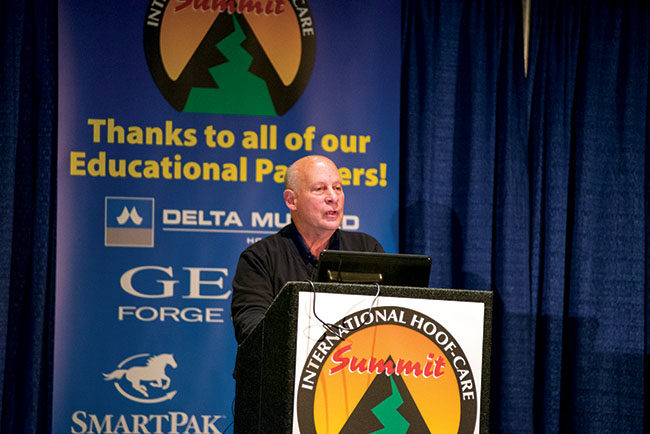American Farriers Journal
American Farriers Journal is the “hands-on” magazine for professional farriers, equine veterinarians and horse care product and service buyers.

Steve Kraus, a clinician for Delta Mustad Hoofcare Center, explains the necessity to think about the appropriate nail heads and shanks in relation to the horse’s needs.
No one in their right mind would suggest that the anatomy of the horseshoe nail is as complex as the horse. Nonetheless, Steve Kraus says it is important for farriers to understand the parts of the nail to make decisions in why to use a particular type. The Delta Mustad Hoofcare Center clinician delivered a swift review of horseshoe nails at the 2015 International Hoof-Care Summit.
“When we think about the criteria to consider for selecting a nail, it is a variable thing,” says Kraus. “There is no one exact way. So if you choose a manufactured shoe, what is it punched for? Or if you are using handmade, what are you punching for? We need to think about the size, weight and thickness of the horseshoe. And then we need to think about the horse — the condition and thickness of the hoof wall. We also think about the duration of the shoeing cycle, as well as several other considerations.”
To properly meet these needs with the nail, Kraus says it is imperative to select a nail head size that sufficiently holds the shoe and fits the taper or the fullering. Other considerations include a shank type that won’t sheer in the hoof wall, and a length long enough to drive high enough, accounting for the shoe and any other material it…